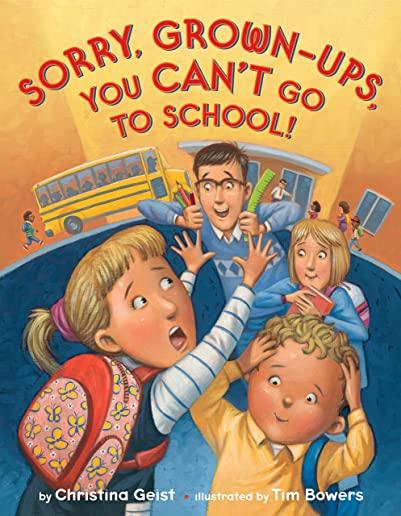
Myers, Alex
product information
description
0Supporting Transgender Students is a guide to help schools learn the basics of what gender is and why it matters in education. Drawing on the author's 25 years of experience working with schools and transgender students, this book considers how transgender and gender non-conforming youth experience the classroom, the playing field, and other school contexts. Supporting Transgender Students provides a clear roadmap and practical examples for how to take action in your school to effect change and create a gender inclusive community.
Foreword
We school people remember well the first time a student or a parent or guardian requested support for their or their child's gender identity. Few things better reveal the character of a community than how it responds when a transgender or gender non-conforming child and their family asks this of us.
When Alex Myers came out to his high school dean twenty-five years ago, teachers and administrators were on their own; there was little literature, no frameworks, just caring adults stumbling through and leaning on their foundational commitment to keep students safe.
I remember the first time I addressed a faculty about pronouns and shared the GLSEN Safe Space Kit. This was nearly ten years ago, when we had to remind faculty, staff, and students not to assume that everyone in the classroom was heterosexual and not to assume one could know someone's sexual orientation or gender identity by looking at them. It's 2021 now, and although many of our schools have removed gendered pronouns from handbooks, created all-gender bathrooms, and modified administrative tasks to make name and pronoun changes more seamless, some schools still need a lot of help just getting to the other side of boy or girl.
This book is the help we need. It provides a guide for how we can help raise other people's children and keep them safe, specifically when we're working to support transgender and gender non-conforming students in our schools. It is about how to get from here to there, covering practicalities and their implementation; it shows us how to address systemic issues and modify the way our organizations communicate about gender altogether.
Most importantly, this book is written by Alex Myers, and he has a story to tell. A graduate of Phillips Exeter and Harvard, he was the first openly transgender student at both institutions. He now runs workshops and speaks at schools across the country on the topic of gender identity and supporting transgender students. It has been my pleasure to know Alex for many years both as a colleague and as a consultant in our efforts to design policies and facilities that are more gender inclusive. Two of my own school communities are better for his work.
Our communities can get polarized quickly, even in their supportive responses and solutions. But gender is fluid and exists on a continuum for many of our students, and some of their gender identities will evolve throughout their years with us. Myers offers a way forward from wherever your school community is on this journey. If you don't know where to begin, Myers reminds us that all students benefit when a school initiates a gender audit guided by his good questions: Where do we make mention of gender in our school? Why do we want to highlight gender here? What is our purpose in seeking to know or control gender in this context? Although bathrooms and sports teams most often require interventions when we first begin to ask questions about gender in our schools, Myers calls our attention to a broader set of concerns. If you aren't yet sure why the proliferation of inclusive terminology and language is important, Myers will remind you: it can save lives.
Some of our schools have been engaged in this work of inclusion and belonging for years, and 2020 has coaxed others into recognizing the experiences of transgender people for the first time, most prominently through the election of a president who spoke for transgender rights during his campaign as well as at least eight transgender, nonbinary, and gender-nonconforming state candidates, including the nation's first openly transgender state senator.
However familiar you are with these issues, you wouldn't have opened this book if you didn't suspect your school needed its guidance, if you didn't believe there were transgender or nonbinary students in your community, or young people who have considered transitioning. Even if no student has asked yet to change their name or pronoun, you know there are those who need you to facilitate these possibilities in advance of their having to ask.
If you are just beginning this journey with your school or with a student, Supporting Transgender Students will reassure you that you can do the right thing. If your experience is like my own, you will worry that you won't think of everything, that you won't be able to quickly enough build the protection and affirmation necessary--and then you will discover Alex Myers and be relieved. Here is a fellow teacher, advisor, coach, and dorm head; he is a school keeper, a wise and generous guide who happens to also be a talented storyteller.
If you have the resources to host Alex Myers at your school, do it (you will enjoy the power of witnessing Alex tell his story to middle school students). If time and space and travel prohibit that actual visit, this book is the best equivalent. Distribute copies to your faculty. Plan some PD. Create a working group. Take a walk around the school with a questioning eleven-year-old in mind and keep them at the center of what you do.
In these pages, Alex Myers will help you to anticipate your students' needs and be better prepared with processes and answers in advance of students and their families needing them. But this book is about more than legal advisories and bathroom challenges. It's about nurturing and supporting all of
Foreword
We school people remember well the first time a student or a parent or guardian requested support for their or their child's gender identity. Few things better reveal the character of a community than how it responds when a transgender or gender non-conforming child and their family asks this of us.
When Alex Myers came out to his high school dean twenty-five years ago, teachers and administrators were on their own; there was little literature, no frameworks, just caring adults stumbling through and leaning on their foundational commitment to keep students safe.
I remember the first time I addressed a faculty about pronouns and shared the GLSEN Safe Space Kit. This was nearly ten years ago, when we had to remind faculty, staff, and students not to assume that everyone in the classroom was heterosexual and not to assume one could know someone's sexual orientation or gender identity by looking at them. It's 2021 now, and although many of our schools have removed gendered pronouns from handbooks, created all-gender bathrooms, and modified administrative tasks to make name and pronoun changes more seamless, some schools still need a lot of help just getting to the other side of boy or girl.
This book is the help we need. It provides a guide for how we can help raise other people's children and keep them safe, specifically when we're working to support transgender and gender non-conforming students in our schools. It is about how to get from here to there, covering practicalities and their implementation; it shows us how to address systemic issues and modify the way our organizations communicate about gender altogether.
Most importantly, this book is written by Alex Myers, and he has a story to tell. A graduate of Phillips Exeter and Harvard, he was the first openly transgender student at both institutions. He now runs workshops and speaks at schools across the country on the topic of gender identity and supporting transgender students. It has been my pleasure to know Alex for many years both as a colleague and as a consultant in our efforts to design policies and facilities that are more gender inclusive. Two of my own school communities are better for his work.
Our communities can get polarized quickly, even in their supportive responses and solutions. But gender is fluid and exists on a continuum for many of our students, and some of their gender identities will evolve throughout their years with us. Myers offers a way forward from wherever your school community is on this journey. If you don't know where to begin, Myers reminds us that all students benefit when a school initiates a gender audit guided by his good questions: Where do we make mention of gender in our school? Why do we want to highlight gender here? What is our purpose in seeking to know or control gender in this context? Although bathrooms and sports teams most often require interventions when we first begin to ask questions about gender in our schools, Myers calls our attention to a broader set of concerns. If you aren't yet sure why the proliferation of inclusive terminology and language is important, Myers will remind you: it can save lives.
Some of our schools have been engaged in this work of inclusion and belonging for years, and 2020 has coaxed others into recognizing the experiences of transgender people for the first time, most prominently through the election of a president who spoke for transgender rights during his campaign as well as at least eight transgender, nonbinary, and gender-nonconforming state candidates, including the nation's first openly transgender state senator.
However familiar you are with these issues, you wouldn't have opened this book if you didn't suspect your school needed its guidance, if you didn't believe there were transgender or nonbinary students in your community, or young people who have considered transitioning. Even if no student has asked yet to change their name or pronoun, you know there are those who need you to facilitate these possibilities in advance of their having to ask.
If you are just beginning this journey with your school or with a student, Supporting Transgender Students will reassure you that you can do the right thing. If your experience is like my own, you will worry that you won't think of everything, that you won't be able to quickly enough build the protection and affirmation necessary--and then you will discover Alex Myers and be relieved. Here is a fellow teacher, advisor, coach, and dorm head; he is a school keeper, a wise and generous guide who happens to also be a talented storyteller.
If you have the resources to host Alex Myers at your school, do it (you will enjoy the power of witnessing Alex tell his story to middle school students). If time and space and travel prohibit that actual visit, this book is the best equivalent. Distribute copies to your faculty. Plan some PD. Create a working group. Take a walk around the school with a questioning eleven-year-old in mind and keep them at the center of what you do.
In these pages, Alex Myers will help you to anticipate your students' needs and be better prepared with processes and answers in advance of students and their families needing them. But this book is about more than legal advisories and bathroom challenges. It's about nurturing and supporting all of
member goods
No member items were found under this heading.
listens & views

NASHVILLE ROCKABILLY / VARIOUS (UK)
by NASHVILLE ROCKABILLY / VARIOUS (UK)
COMPACT DISCout of stock
$12.99
Return Policy
All sales are final
Shipping
No special shipping considerations available.
Shipping fees determined at checkout.






